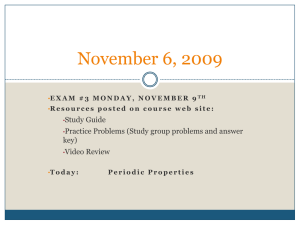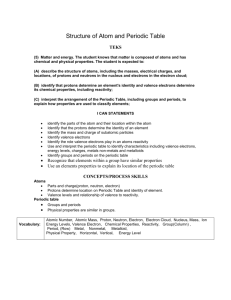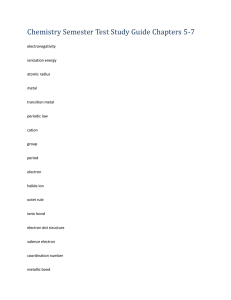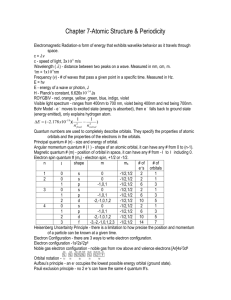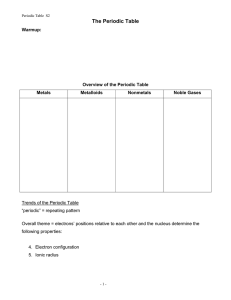Chem 1A Test 4
advertisement
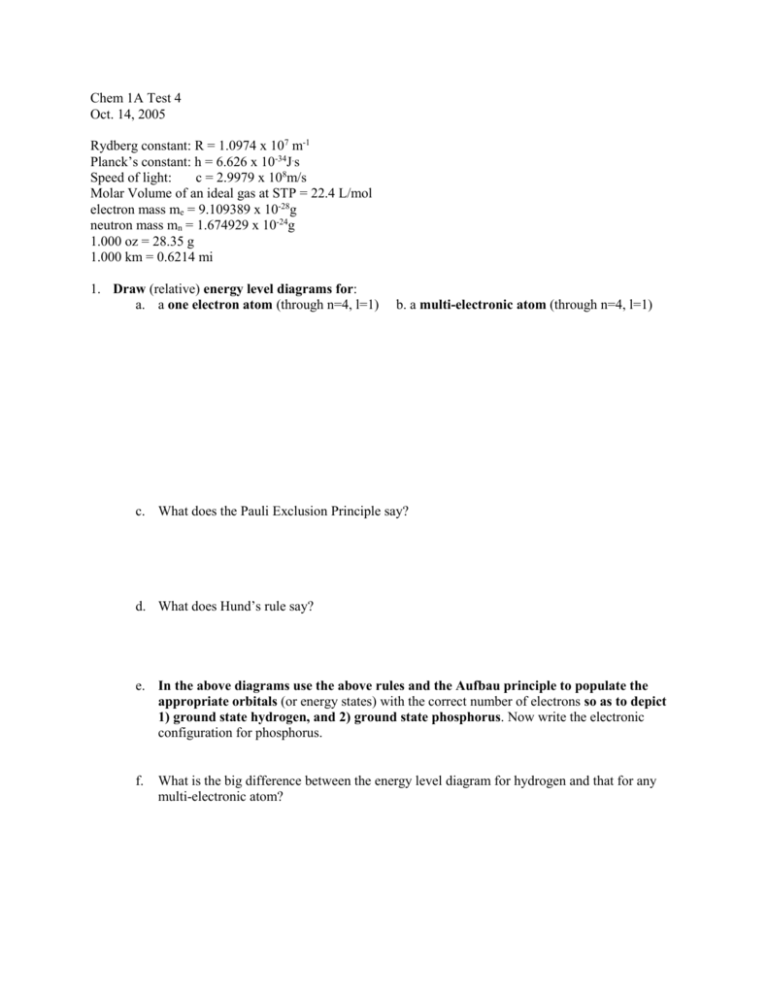
Chem 1A Test 4 Oct. 14, 2005 Rydberg constant: R = 1.0974 x 107 m-1 Planck’s constant: h = 6.626 x 10-34J.s Speed of light: c = 2.9979 x 108m/s Molar Volume of an ideal gas at STP = 22.4 L/mol electron mass me = 9.109389 x 10-28g neutron mass mn = 1.674929 x 10-24g 1.000 oz = 28.35 g 1.000 km = 0.6214 mi 1. Draw (relative) energy level diagrams for: a. a one electron atom (through n=4, l=1) b. a multi-electronic atom (through n=4, l=1) c. What does the Pauli Exclusion Principle say? d. What does Hund’s rule say? e. In the above diagrams use the above rules and the Aufbau principle to populate the appropriate orbitals (or energy states) with the correct number of electrons so as to depict 1) ground state hydrogen, and 2) ground state phosphorus. Now write the electronic configuration for phosphorus. f. What is the big difference between the energy level diagram for hydrogen and that for any multi-electronic atom? 2. Explain why you observed discrete lines in the atomic emission spectra you observed from the elemental gas discharge tubes in experiment #16. Use a diagram if that will help. 3. Give ground state electron configurations for the following elements and ions (10 pts): a. Mg b. Mg2+ c. Al d. Al3+ e. Ne f. F g. Fh. Ne i. j. Ti Ti4+ 4. Draw a realistic energy level diagram for your favorite multi-electronic atom. (This should include several unoccupied levels or subshells). a. On your diagram indicate what happens during an absorption. b. On your diagram indicate what happens during an emission. c. Give a simple mathematical expression for the frequency of your possible emitted photon (in terms of energy levels). 5. Periodic Table, quantum numbers, & electron configurations. Label the following cartoon of the periodic table and use your own words to: a. Describe the connection between principle quantum number n and the periodic table. b. Describe the connection between the angular momentum quantum number l, and the periodic table. c. Describe the pattern of electron configurations in your favorite main group family. d. What does the periodic table tell you about number valence electrons for a main group element? e. Why is the actinide-lanthanide block 14 elements wide? Why is the transition metal block 10 elements wide? Now explain the widths of the remaining blocks. 6. Sketch the following orbitals with the correct number of radial and angular nodes: a. 4s orbital b. 3px orbital c. 2py orbital d. 5dxz orbital 7. 1st ionization energies increase from left to right along a period (row) in the periodic table and slightly decrease down a family (column). a. Explain both trends. b. A glitch in the row trend occurs between oxygen and nitrogen where the 1st IE actually decreases! Can you explain the glitch? 8. Extra: For the elements in period 2 draw Lewis structures and indicate the chemical formula for the simplest existing compounds of hydrogen with these elements. For each of these elements indicate the number of “valence electrons” and also indicate the “valence”. Lewis structure? chemical formula # of valence electrons the valence


